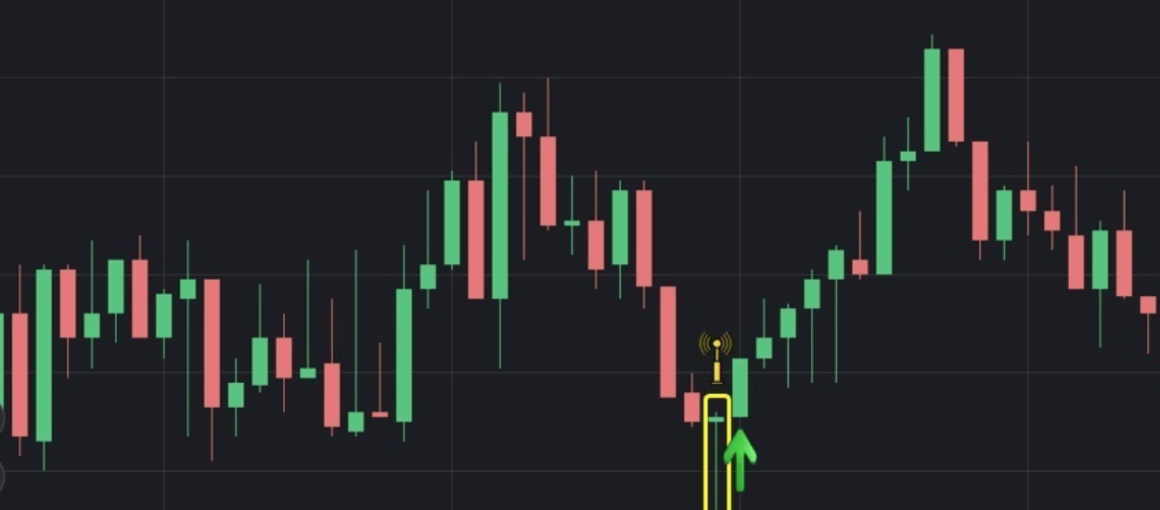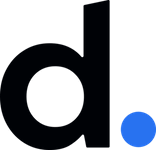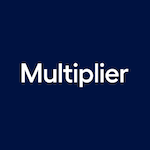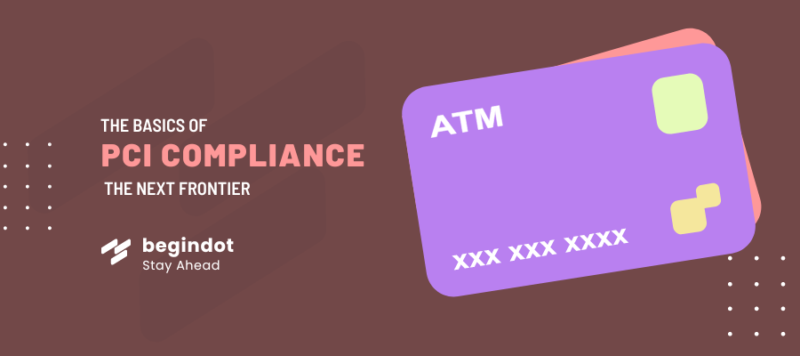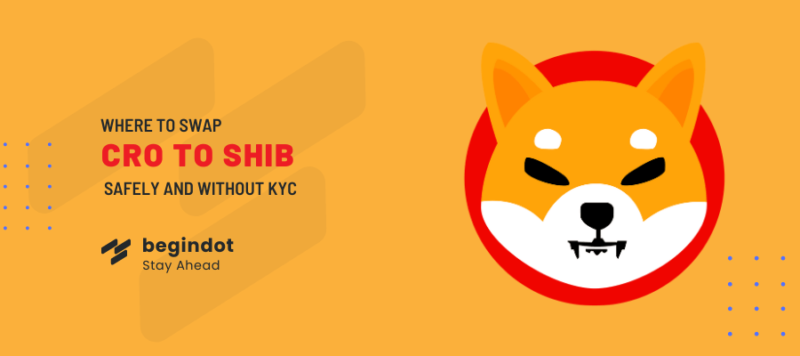When it comes to trading stocks, a dragonfly candlestick on a chart can be very beneficial. But what exactly is a dragonfly candlestick? The dragonfly candlestick is a technical indicator that is displayed on an open, high, low, and close up to the previous session’s high and low.
The last candle on the daily chart will be the body or tail of this formation instead of the head like most other candlesticks. Moreover, the body or tail can be shaped into a dragonfly variation.
During the early part of the trading session, traders may see a hammer candlestick or a doji candlestick as well. But during the later part of the day, one will see a dragonfly candlestick on their charts.
Despite having subtle differences from other orders, it is still important to know how to identify and differentiate between them. The name dragonfly comes from the doji’s appearance, which resembles a dragonfly’s wings.
A dragonfly doji is a type of candlestick which occurs when the opening and closing prices are equal and forms a long lower shadow.
The longer it is, the more significant it becomes indicating a good place for traders to take short positions.
The smaller the range between the opening and closing prices, but still equal, the greater chance for a breakout in price in the opposite direction. Dragonfly candle patterns are characterized by long lower shadows that form the candlestick’s body and a small upper shadow that may be absent or almost invisible.
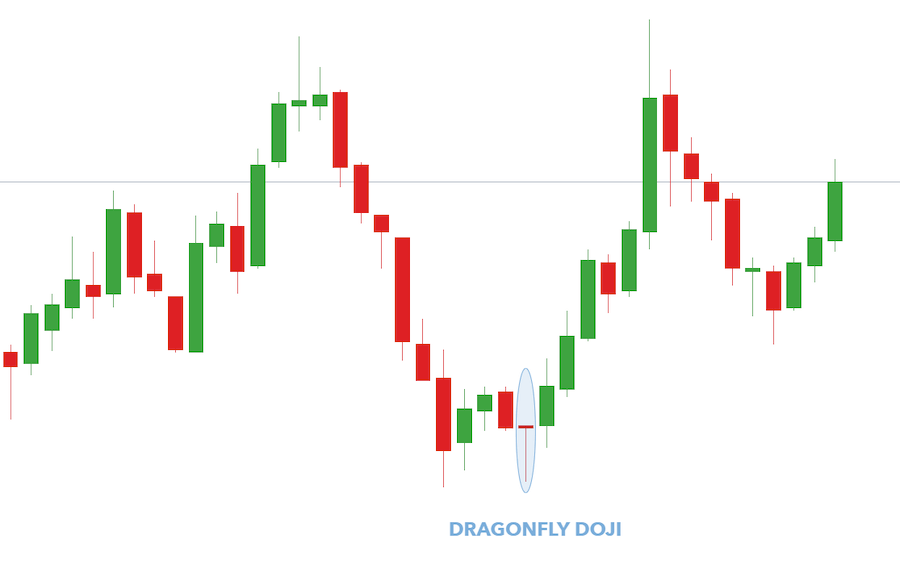
Candlesticks on the Daily Chart
On the daily chart, candlestick formations have different colors. A bullish one is yellow and a bearish one is red. The opening and closing prices are green, orange, and blue respectively.
The star-like candlestick (doji) will come in between the opening and closing price of a candlestick formation. It does not have any shadow, hence it only has two candlesticks. The longer this candlestick is, the more important it becomes as a pre-requisite for a breakout.
Dragonfly Candlestick on the 1 Minute Chart
The dragonfly candlestick on the 1-minute chart seems to be very different from those of the other charts. It has no body compared to most other candlesticks.
It is similar to the candlestick but has a long lower shadow formed after the opening and closing prices of the previous session. The star-like candlesticks are referred to as doji, as it resembles that of a dragonfly’s wings.
The dragonfly formation on this chart usually occurs when prices reverse course at the open and close of daily trading sessions and form a long lower shadow.
What Does the Dragonfly Doji Tell You?
The dragonfly candlestick on the 1-minute chart usually appears after a bullish or bearish trend. This indicates that the market has entered into a consolidation phase in which prices have steadied out, therefore are less volatile.
During this period, traders should be aware of breakouts in either direction. The dragonfly candlestick is the first sign of a change in price trend and indicates a good place for traders to take short positions or long positions depending on their bias.
Furthermore, it provides an excellent opportunity for day traders to enter the market. Traders should look at the candlestick pattern and inspect whether or not it has a body and how many days it has.
They will also have to consider the volatility of the market and its volume activity. In order to make accurate trades, they should learn all they can about other types of orders like doji, hammer, and inverted hammer candlesticks so that they can be able to trade in any type of situation effectively.
How to Use the Dragonfly Doji
Dragonfly candles are an excellent way that traders can take advantage of and use in the market. They occur frequently, they offer clear and reliable signals, they have a relatively long life span and most importantly, they are very easy to trade and understand.
However, these patterns are dependent on past price action. Traders should not just focus on the body of the dragonfly, as it may differ according to the chart timeframe.
It is, however, important to check if there is an upper and lower shadow between the opening and closing prices. The above signals are signaled by a long lower shadow between the opening and closing prices in the 1-minute chart. A doji will have a small upper shadow that resembles that of a star.
The candlestick’s life span is not very long and it could vanish within minutes or hours. However, if it has an upper and lower shadow, trade in the direction it signals.
The average lifespan of a doji is between 15 minutes to 1 hour depending on the volatility level of price movement. A doji is considered to last for days as long as there is sufficient confirmation of price reversal which means that prices moved higher or lower before reversing.
Limitations of Using the Dragonfly Doji
The dragonfly doji is a very dependable trading strategy and can be used by almost all traders. However, it is important to understand that the number of days this candlestick has to over or underperform may differ from trader to trader.
So, traders should be aware of this and consequently act correctly in the market. The doji candle has an average long life span for price movements. Therefore, traders must not expect immediate action when buying or selling after looking at these formations on charts. Traders should wait until the price moves in the direction they want and then take a position accordingly.
Additionally, traders should not expect the market to find an equilibrium overnight depending on their bias, but keep in mind that candlestick patterns cannot be relied upon blindly.
One must be able to identify the pattern and its significance before placing any trades based on it if they want a profitable outcome.
However, traders could use these markets as reference points to gauge their opinion or expectations of what is going to happen next. Dragonfly candle patterns could also be employed as support and resistance levels.

